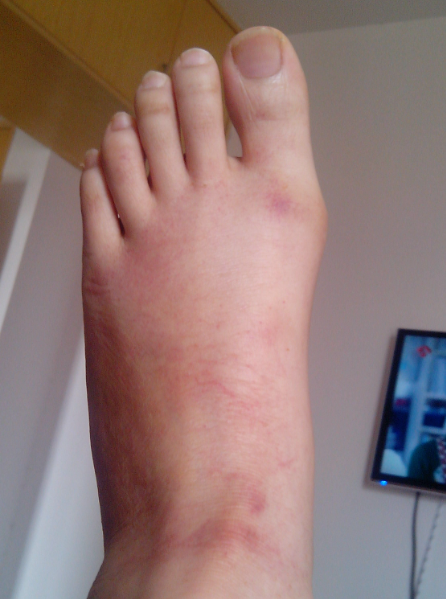
We rarely think about our feet until they hurt. They are the silent, hardworking foundation that carries us through life, mile after mile, year after year. But if you were to slow down and truly watch your feet as you walk, you might notice something subtle, a story written in the movement of your bones. Specifically, watch your big toe.
That final “push-off” from the ground, the moment your heel is in the air and your body is propelling itself forward, is a biomechanical masterpiece. And the angle of your big toe during that split second reveals a hidden truth about your body’s structural integrity. It’s a silent confession about the state of your foundation.
If your big toe bends gracefully at a near 45-degree angle as you step off, your body is whispering, “All systems are go.” The architecture is sound. But if your big toe remains stiff, barely bending, or worse, if it angles inward toward the other toes in a cramped, reluctant motion, your body is sending a different message altogether.
This isn’t just about foot comfort. The way your big toe bends is a direct window into the hidden truth about your posture and gait.
The Hidden Truth: You Are Walking with Compensated Pain.
Your body is a brilliant compensator. When one part is weak, stiff, or in pain, other parts step in to take over the load. This is a short-term survival tactic with long-term consequences.
- The Stiff Big Toe (Hallux Rigidus): If your big toe joint is rigid and doesn’t bend as you roll through your step, your body has a problem. To avoid the pain of bending that joint, you will subconsciously change your entire gait. You’ll start to roll off the outside of your foot, a motion called supination. This avoids the big toe but places unnatural stress on the ankle, knee, and hip. The hidden truth a stiff big toe reveals is that your knee or hip pain might not be originating in your knee or hip at all—it’s a downstream complaint from an upstream problem in your foot.
- The Inward-Angling Toe (Hallux Valgus/Bunion): If your big toe angles inward toward your second toe during the push-off phase, it tells a story of architectural collapse. The transverse arch in the ball of your foot has likely flattened, causing the metatarsal bones to splay apart. This forces the big toe out of alignment. To walk, you now have to push off from a misaligned, unstable joint. This doesn’t just cause a bunion; it forces your entire leg to rotate slightly, which can torque the knee and throw your hip and lower back out of alignment. The hidden truth here is that your chronic lower back stiffness could be rooted in the faulty mechanics of your push-off.
The Hidden Truth: Your Body is Losing Its Natural Spring.
The big toe is the final lever that propels you forward. A healthy, bending toe acts like the spring on a diving board, storing and releasing elastic energy to make walking efficient and fluid.
When that spring is broken—when the toe is stiff or misaligned—the “spring” is gone. Your walk becomes a jarring, inefficient shuffle. Your calf muscles, hamstrings, and glutes have to work overtime to generate the power your foot no longer can. The hidden truth your big toe reveals is the reason you feel so fatigued after a walk, or why your calves are perpetually tight. Your body is working harder than it needs to, all because of a few dysfunctional joints at your foundation.
The Hidden Truth: You Are Aging in Place, Not Moving in Space.
There’s a vast difference between simply being mobile and moving with grace and power. A stiff or crooked big toe is a sign that you are slowly surrendering efficient movement. You are adapting your body to a smaller, less painful range of motion. You are, in a very real sense, building a cage made of your own compensatory habits. The hidden truth is that the way you walk today is determining the way you will be able to walk in ten years.
What Your Toe is Telling You to Do:
This isn’t a life sentence; it’s a diagnosis. Your big toe has given you a critical piece of intelligence.
- Listen to the Whisper: Pay attention. Watch your feet. Better yet, walk barefoot on a dusty floor or a sandy beach and look at the footprints you leave. A good footprint shows a clear connection from the heel, along the outside of the foot, and across the ball of the foot to a distinct push-off from the big toe.
- See a Professional: A good podiatrist or physical therapist can read the story of your gait like a book. They can identify the root cause of the stiffness or misalignment.
- Reclaim Your Foundation: Simple exercises can work wonders. Practice picking up a towel with your toes to strengthen the intrinsic foot muscles. Sit in a chair and practice rolling a golf ball under your foot to loosen the plantar fascia. Consciously practice walking, focusing on that final, deliberate push-off from the big toe.
The way your big toe bends while walking is a silent, honest biography of your body’s mechanical health. It reveals the compensations, the silent pains, and the hidden weaknesses that are shaping your posture and your future mobility. By learning to read this story, you gain the power to rewrite its ending, ensuring your foundation remains strong, stable, and ready to carry you on all the journeys yet to come.